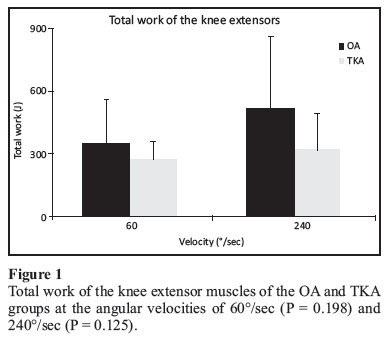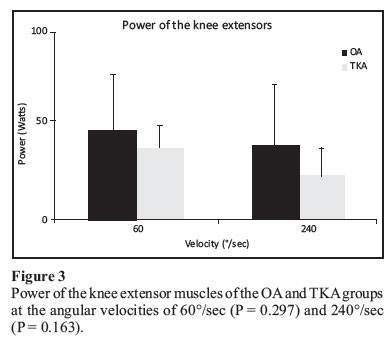INTRODUCTION: The inflammatory manifestations of knee osteoarthritis (OA) lead to muscle inhibition and hypotrophy, resulting in a reduction in total muscle work and muscle power. Total knee arthroplasty (TKA) is the most adequate surgery for the treatment of advanced OA. However, its effects on muscle functional behavior have not been well understood. OBJECTIVE: To compare the total work and power of the knee flexor and extensor muscles in patients with OA (20) and in patients post-TKA (12) at two angular velocities (60º/sec and 240º/sec). Methods: An isokinetic Biodex dynamometer was used to assess muscle power and total work during isokinetic contractions. Two-way ANOVA for repeated measures was used to compare total muscle work and muscle power between the groups (SPSS software, version 13.0; significance level, P < 0.05). RESULTS: There was no difference between the OA and TKA groups for the total work of both knee extensors and flexors at the two angular velocities (P > 0.05). In addition, no difference was observed in the muscle power of the knee extensors and flexors (P > 0.05). CONCLUSION: Total work and power were similar in the OA and TKA groups, suggesting that TKA did not improve functional capacity, which was similar in both groups.
knee osteoarthritis; total knee arthroplasty; dynamometer






